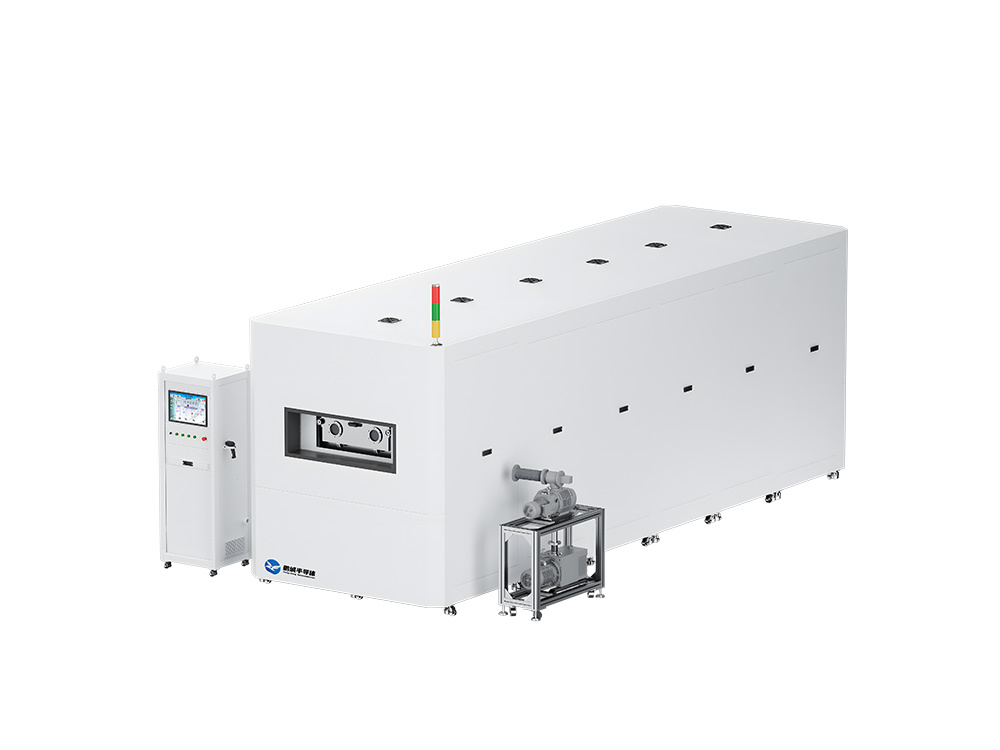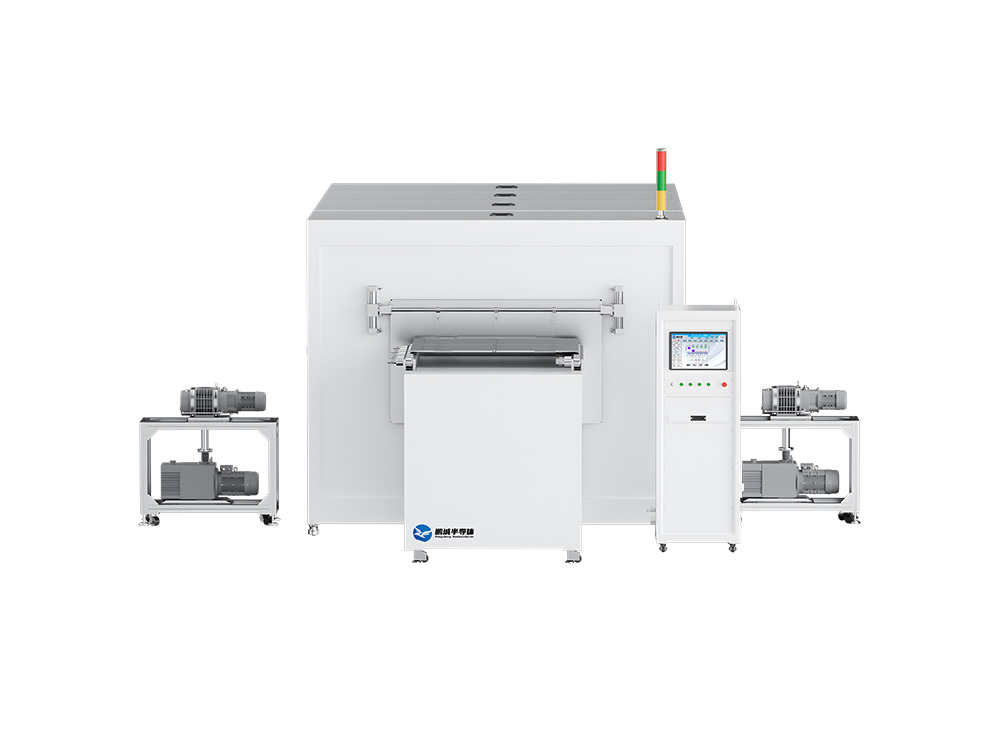Production-type TGV/TSV
Production-type TGV/TSV high vacuum magnetron sputtering coating machineThis equipmentis used forglass substratesandceramic substratesforhigh-density through holesand blind holes coating, with a depth-to-diameter ratio >10:1. For example: used for substrate coating processes such as Cu/Ti microstructures and Au/TiW transmission line dual system film layer deposition capabilities, providing support for the increase in micro-system integration density.

Equipment advantages: high uniformity and repeatability of the film layer, strong adhesion of the film layer, and programmable automated control based on process formulas.

Equipment structure and performance parameters
- Single coating chamber, double coating chamber, multi-chamber coating chamber
- Horizontal structure, vertical structure
- Linear type, cluster type
- Sample transfer: linear type, circumferential type
- Number and type of magnetron sputtering targets: multiple rectangular magnetron targets
- Magnetron sputtering targets: compatible with DC, RF, medium frequency, and high-energy pulse
- Substrate can be heated, lifted, and biased
- Reactive gases can be introduced for reactive sputtering coating
- Operating modes: manual, semi-automatic, fully automatic
- Substrate holder: configured according to substrate size
- Substrate sizes: 2, 4, 6, 8, 10 inches and customer specified sizes
- Limit vacuum degree of the sample inlet/outlet chamber: ≤8X10-5Pa
- Working background vacuum degree of the sample inlet/outlet chamber: ≤2X10-3Pa
- Limit vacuum degree of the coating chamber: 5X10-5Pa,
working background vacuum degree: 8X10-4Pa
- Film layer uniformity: <5% (within wafer), <5% (between wafers)
- Overall leakage rate of the equipment: vacuum degree ≤10Pa after shutdown for 12 hours


News Center









